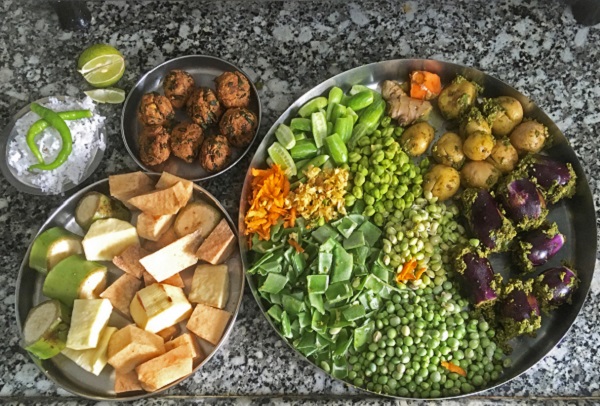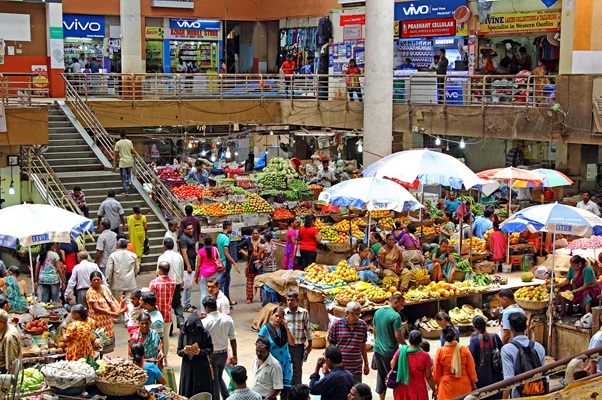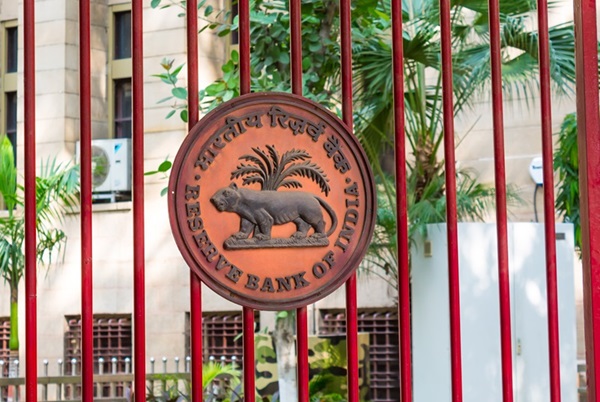.png)
The 2% Vegetarian: Misunderstood, Mis-fed, and Mildly Irate
A reflection on the forgotten 2% of vegetarians, neither vegan purists nor paneer loyalists, who crave imagination and respect in their meals, not beige monotony.

Kalyani Srinath, a food curator at www.sizzlingtastebuds.com, is a curious learner and a keen observer of life.
October 18, 2025 at 5:19 AM IST
Between the smug omnivore who prides themselves on ordering “one extra salad” and the paneer-guzzling vegetarian who believes that a meal without cream is incomplete, there exists a stubborn, oft-overlooked tribe: the 2%. These aren’t your typical vegetarians nor are they vegan zealots. They refuse meat, fish, and fowl, sure—but they also recoil at mushrooms, decline tofu with polite discretion, and treat paneer like a distant relative they don’t quite trust. This minority, small in number but large in discerning taste, is caught in an awkward culinary purgatory. To the maze of spreadsheets and global food chains, they’re statistical noise, complicated outliers who refuse to be placated by the ubiquitous “safe vegetable option.”
This isn’t a manifesto against meat or a slight on carnivorous delights. It’s simply a call for vegetarian food to step out of the shadows, to show up with imagination and respect. After all, vegetables can be the stars of the show, not just understudies in a meat-centric drama or sidekicks to paneer and potatoes on endless rotation.
They know vegetables have personalities and histories. They see karela not as a bitter horror but as a soulful protagonist. They understand that vaal papdi (field beans/hyacinth beans) can sing its own song if handled with affection. They recognise that the Indian vegetable universe does not start and end with the holy triumvirate of aloo, matar and… yes, you guessed it, paneer.
And yet, to the POS terminals of international hotel chains, the 2% are almost mythological—small enough to ignore, complex enough to sideline, and frustrating enough to make serving them feel like an unnecessary headache. So they’re left with another bowl of curd and something beige, dreary and repetitive.
Lost Flavours
Not so long ago, vegetarian food in India was a celebration of regionality and creativity. That was before the paneer-industrial complex took over, before cream-laced gravies became shorthand for sophistication in middle-class dining rooms. Back then, a vegetable wasn’t just a side—it was the star.
Four decades ago, one might find tinda (apple gourd—yeah, that’s a thing!) thriving in Punjab’s kitchens; Chakkara Valli Kizhangu (sweet potato) seasoned to perfection in a spicy, tangy sauce in Tamil Nadu; the Kumro Phool (pumpkin flower) from Bengal paving the way to the crunchiest, most delicious bora (fritter); gawar fali (cluster beans, to the uninitiated) showcased in Gujarat; and bharli vangi (stuffed aubergine) ruling Maharashtra’s culinary repertoire. And karela—that magnificently misunderstood vegetable—was revered, not reviled. Each region had its specialties, each family its culinary champions. Recipes were not flash-broadcast for Instagram likes; they lived on flour-stained notebooks and whispered secrets handed down through generations.
Home-cook royalty ruled quietly but brilliantly. Grandmothers, undeterred by modern appliances, wielded pressure cookers and iron kadais like magic wands. They could coax complex depth out of tamarind, a hint of hing, or a pinch of jaggery. Small-town bawarchis (home cooks) were culinary alchemists who transformed torai and lauki into dishes even avant-garde chefs today wouldn’t dare approach unassisted by gadgets. Even street food—vaal vadas, kathol biryani, Konkani tomato saar, the winter queen undhiyu—spoke its own dialect, utterly distinct and deeply loved.
Then came the great culinary flattening.
Global hotel chains saturated metros and tourist hubs, bringing standardised menus that favoured the easily replicable and crowd-pleasing over the intricate and regional. The once colourful mosaic of India’s vegetarian food turned into a monotonous buffet where paneer became the default protagonist, often paired with potato in new costumes when fresh ideas dared to emerge.
At airport lounges and star hotels (and veg thalis across the subcontinent), vegetarian food reached its nadir. The agenda was simple: offend no one, excite no one. Dishes paraded in the same beige hues, lacking any sense of place, history or love.
Culinary Neglect
Picture yourself in a five-star hotel in Kerala and ask for a vegetarian meal that reflects the locale. Expectations might include a fragrant olan, a crunchy thoran or a comforting kaalan. Instead, the kitchen gifts you a paneer masala that might have been conjured anywhere between Gurugram and Glasgow—completely lacking soul or specificity. Seek something local, and the waiter’s helpless gesture toward the “continental section” lands you before limp spaghetti napolitana lurking regretfully behind glass.
The irony is that ingredients aren’t scarce. Kitchens of star hotels (at least four-star upwards) have access to the freshest regional produce. What they lack is the courage—or more importantly, the will—to cater to the culinary whims of the 2%. Why serve the complex and nuanced to a microscopic segment when 80% of guests want the reliable and familiar? So the lowest common denominator wins, with paneer and aloo playing repeat roles under different guises, hues and colours.
Yet the 2% want little fanfare. No foamed turai or deconstructed lauki, please. Just a dish with personality, one that knows its roots. They long for food cooked with care, not a pale reflection of bland safety.
To much of India, vegetarianism remains a curiosity. In Goa, Nagaland, Kerala and the Northeast, it’s a diet followed mostly by guests, never locals. Even in states rich with vegetarian heritage, chefs outsource regional authenticity to token garnishes—a stray curry leaf, a hint of grated coconut—false flags of culinary identity. It’s like slapping a turban on a stranger and declaring them Rajasthani.
Still, the 2% persist. They roam the world, navigating bland buffets with practised patience, clutching WhatsApp tips on hidden cooks in temple alleys, ferrying jars of homemade pickles like treasured currency. They find refuge in supper clubs (thank God for these) and whispered recommendations, because that’s where flavour lives—in kitchens unseen by tourist-friendly menus.
Why They Matter
For sprawling hotel chains, this small vegetarian faction barely nudges the bottom line. They’re outnumbered by paneer addicts and unapologetic meat-eaters. But ignoring the 2% is commercial folly. When they’re fed well, they don’t just return—they evangelise. They write rhapsodic reviews, bring friends, and immortalise the chef in legend and social media alike.
The tragedy isn’t just oversight; it’s the rote resignation that accompanies it. Menus are too often born from algorithms that assume paneer and potato will suffice for every “veg” category. Imagination, the secret ingredient for the 2%, is inconvenient when 200 covers await and the clock never slows. But it is imagination that turns a meal into a memory.
The 2%, the much-ignored minority, survey buffets with wry amusement, always prepared with a backup snack, skipping tofu with robotic grace and sidestepping mushrooms like an obstacle course.
Feed them one exceptional meal—the kind that remembers karela’s bitterness or vaal papdi’s pep—and you win their fierce loyalty. They’ll forget every beige buffet dish once served, and celebrate this rare encounter with the passion of converts.
All they ask is to be acknowledged. To be served vegetables with stories, not just names on a menu. To taste food that feels lived-in, lovingly spiced and unapologetically regional. Because the vegetable kingdom once held court in India—and it deserves to do so again.
In the end, the 2% remain the culinary underdogs—mis-fed, mildly irate, yet hopeful for a day when their palate’s complexity won’t be a problem but a celebrated feature. When that day comes, these diners will stand up—not just as 2% of the market, but as 100% proof that good food speaks for itself.



